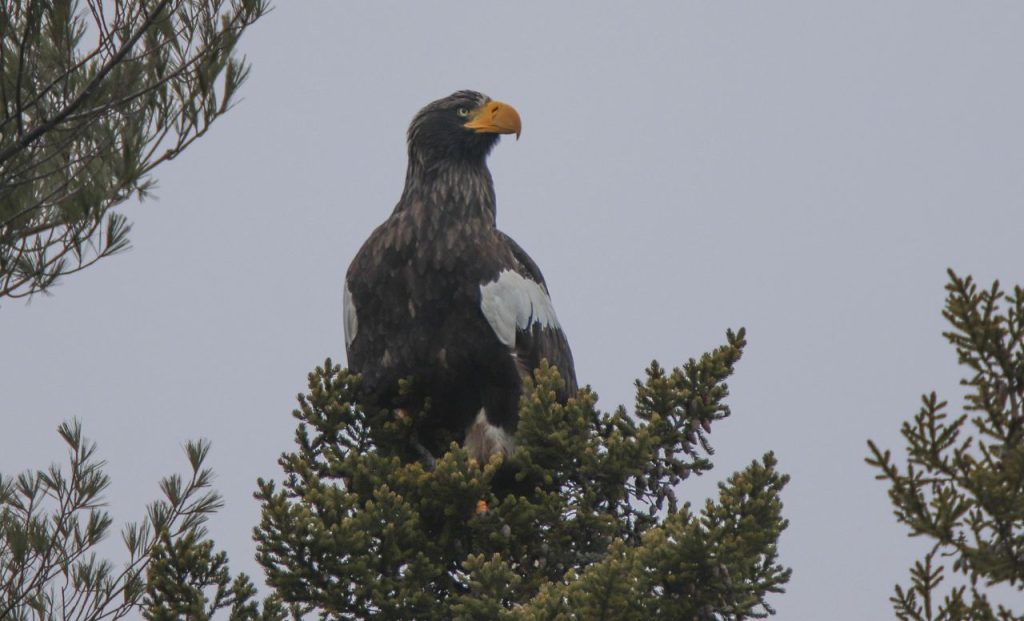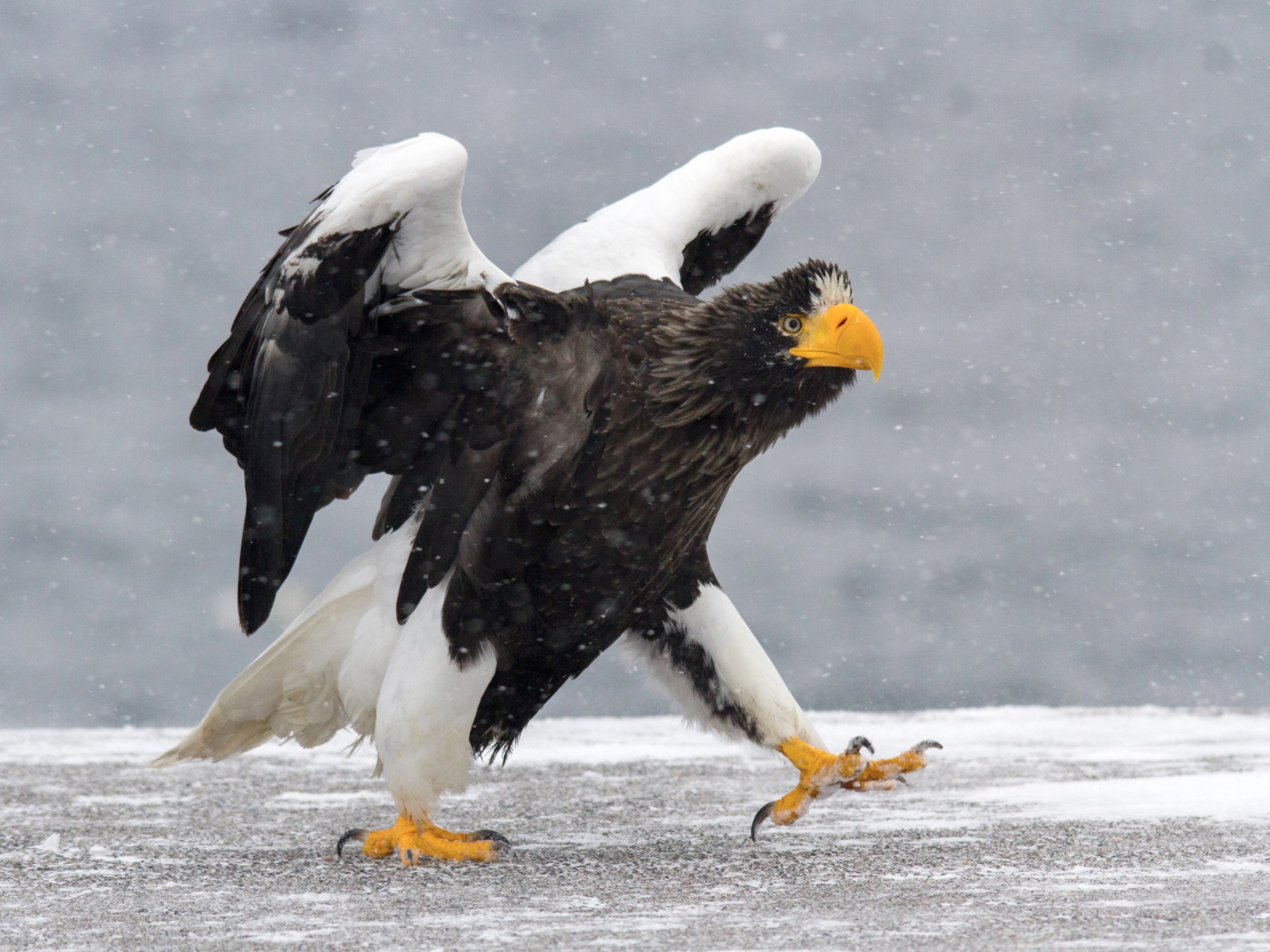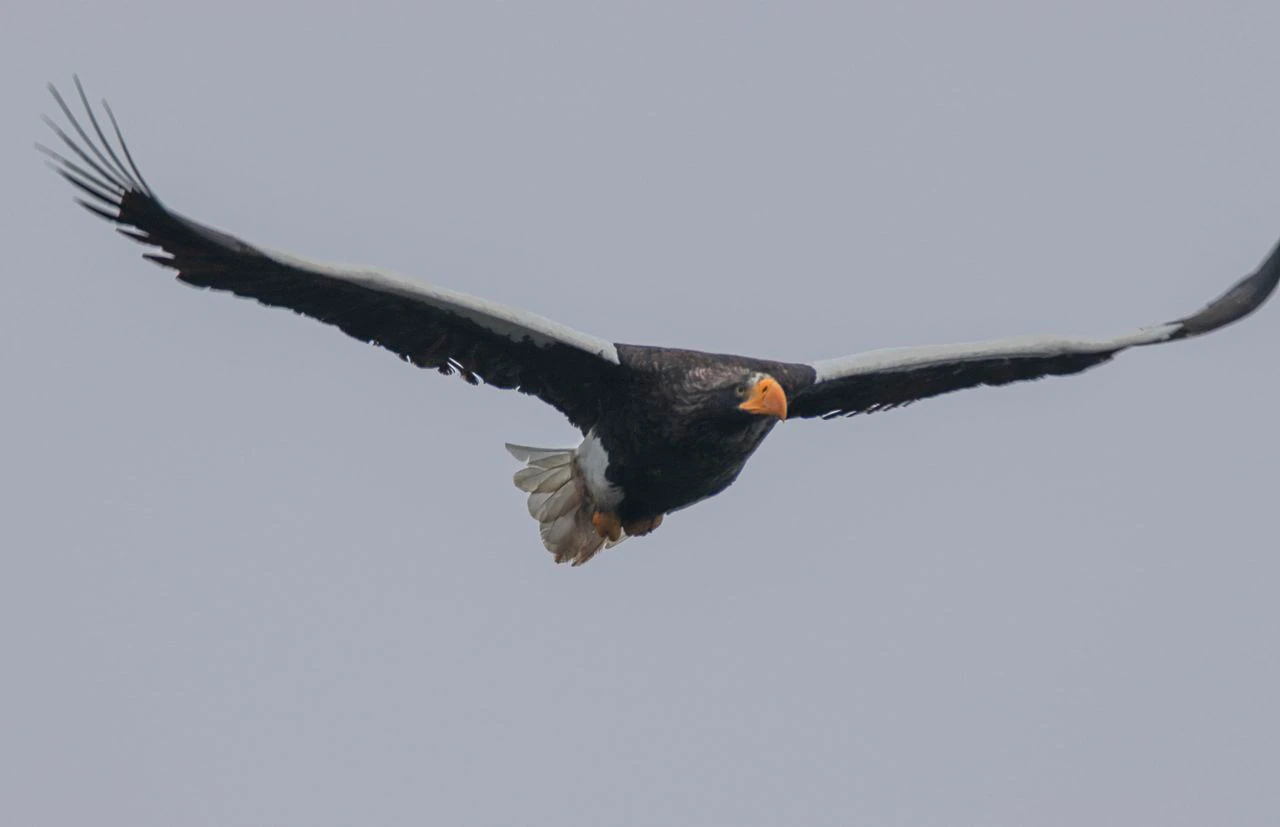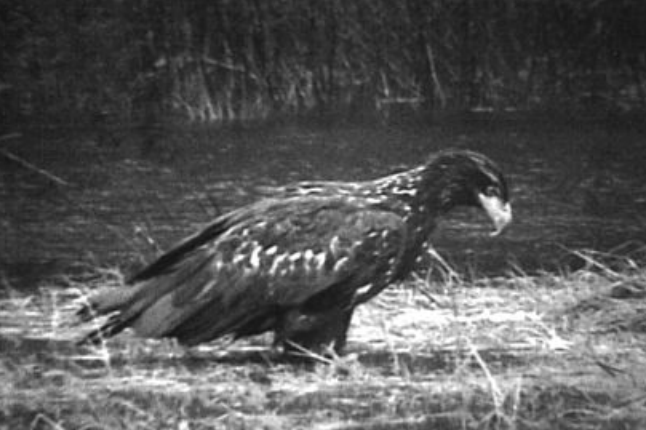Massive, Lone, Steller’s Sea Eagle in Maine, Still ‘Blowing [the] Minds’ of Birdwatchers Flocking to Glimpse it

(EnviroNews Nature) — Boothbay Harbor, Maine — One of the rarest eagles in the world has sent birdwatchers into a flap after spending weeks in Maine. A lone Steller’s sea eagle (Haliaeetus pelagicus), which is native to Russia, the Korean Peninsula and Japan, has taken up residence near Boothbay Harbor. After first being spotted in Texas in early 2021, the episode marks the first time the species has ever been observed in the contiguous United States.
The species is one of the largest raptors in the world, weighing up to 20 pounds with an eight-foot-wide wingspan, a huge yellow bill and striking white wing markings. There are thought to be only 4,000 left in the wild, mostly found above the icy coastlands of eastern Russia where they feed on a plentiful supply of pollock fish (Pollachius pollachius).
Thousands of birdwatchers have flocked to Maine to catch a glimpse of this giant raptor which is dwarfing the many bald eagles (Haliaeetus leucocephalus) often spotted nearby. It is unclear whether it is a male or female.
While the bird may be taking a timeout in the Harbor, this is in fact just one step in an epic journey which has taken it from Alaska to Texas, onward to eastern Canada and then New England — in just the last few months.
Still, the reasons for the eagle’s long and lonely pilgrimage remain a mystery. Doug Hitchcox, a naturalist with Maine Audubon, told NPR News the eagle could have been blown off course due to “an internal GPS hiccup,” and may be lost. He added, “At least it’s in an area that it’s going to survive [in] and do fine. It will probably feel great in the negative two degrees.”

To describe the eagle as a welcome visitor would be an understatement. Hitchcox explained further saying this:
This is the dream. It’s now just sitting there, showing off for everyone. And everyone wants everyone else to see it. I don’t even know what to compare it to. We often say these [rarities] shouldn’t be here. This bird should not even be on this continent. But because there are only about 4,000 in the world, you could travel the world birding and never see one. And it’s an hour from my home.
The first known spotting of the bird in the lower-48 states came in March of 2021 in Texas; it wasn’t reported again until this Christmas when it was spotted in Massachusetts. Since then it has set up shop in Maine’s Boothbay Harbor where Deirdre Fleming visited on behalf of the Portland Press Herald. She described a frenzy of activity as birdwatchers from Massachusetts, New Hampshire and Vermont clamored to grab a photo of the fabulous flier.

Matthew Gilbert of Cumberland, Maryland told Fleming, “I saw eagles in a tree and looked through my scope and saw bald eagle, bald eagle, then another bald eagle, and then the big white patches on the wings of the next bird, and that big, honking, yellow bill – it was unmistakable. I said, ‘Guys, guys, guys, I got it, I got it.’ It was super exciting.”
According to Nicholas Lund, a contributor to Audubon Magazine, the eagle appears to be in good health. He explained:
It’s clearly strong enough to fly across an entire continent and take several hundred-mile flights every couple of weeks. It has been observed feeding on fish at several locations and displays no sign of injury or illness. Why the bird has strayed so far from its native range is anybody’s guess.
Marshall Iliff works at the Cornell Lab of Ornithology and is a project leader for the eBird app scheme which helps birdwatchers identify the birds they might see or hear in their local area while recording the species’ location and date/time. Iliff, who was one of the first people to spot the eagle in Massachusetts, told Audubon Magazine that scientists are just beginning to understand the tendency of raptors to wander and explained that many of these traveling aerial predators are young birds dispersing to find new homes.
“Raptors are more and more blowing our minds with their movements,” Iliff said. “And with more observers, more cameras, and digital tools like eBird, we’re seeing that long-distance [raptor] dispersals are a rare but regular phenomenon.”
So what does the future hold for this wandering giant which finds itself so far from home? Well that’s anyone’s guess, but Lund seems to think it could decide to make North America its new home.
“This eagle is right at home. Yes, it’s on a different continent, but it is in a place that is very much like its native range,” Lund told the Huffington Post. “I choose to sort of celebrate it as an explorer — as someone living its best life and going out on its own and making its way in the world.”
The coming spring will be an interesting period for observing ornithologists as these stunning eagles tend to look for new partners in February. Could this individual even mate with a bald eagle? Well, anything is possible. Fifteen years ago, what was believed to be a hybrid of the two species was spotted on Vancouver Island, British Columbia.

What is for certain, however, is that wherever this magnificent eagle chooses to travel next, it will leave a trail of elated birdwatchers in its wake.
FILM AND ARTICLE CREDITS
- Dan Keel - Journalist, Author



